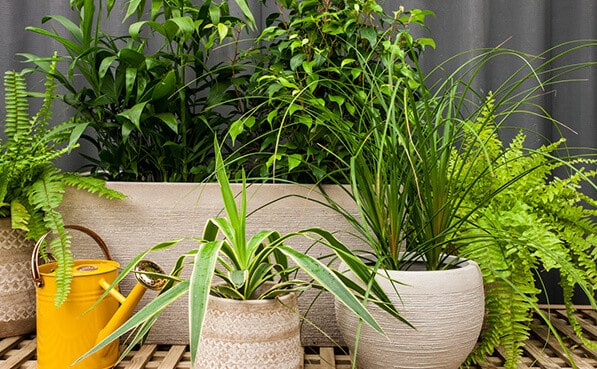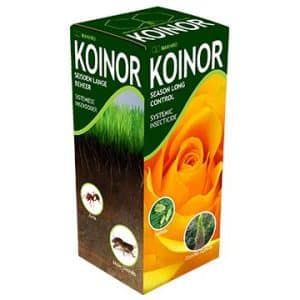Autumn gardening Q&A with Terry Moller-Welsh
DIY and how-to

If you would like to breathe new life into your garden as winter approaches, read on. We talked to landscape garden designer Terry Moller-Welsh about incorporating the latest gardening trends into your space while giving your plants all the TLC they deserve this time of year.
Terry, you keep a close eye on garden trends across the globe. What are the biggest trends to watch out for right now?
A focus on the individual: Over the last couple of years, garden design has moved towards suiting the individual’s lifestyle, with a trend towards creating a garden that is right for its setting and the architectural style of the house it compliments. There has also been a focus on outdoor living and entertainment, and creating a garden that suits this lifestyle.
Waterwise gardening: We’re increasingly concerned about the environment and our water consumption. As such, a trend has emerged in which plants with similar water needs are planted together, and low-water plants take preference over plants that need more water to thrive. Succulents and low-water indigenous plants specific to an area have become the plants of choice for many gardeners.
Therapeutic gardens and edible landscapes. These types of gardens are hot news right now. When it comes to creating an edible garden, the trend is to mix flowering herbs, vegetables and scented plants (the latter help to deter pests and diseases). It’s also become trendy to plant veggies in raised beds and containers.
Other notable trends include companion planting and adding long-flowering, colourful plants to the garden. It’s all about selection and positioning, and styling according to the individual’s tastes and interests.

With many of us moving into smaller spaces, container gardening has become popular. What are your tips for taking care of plants in containers?
Container plants require special attention and supplementary feeding, as they are easily starved of nutrients. Regularly give your plants the necessary feed they need to stay strong and healthy.
To prevent container plants from drying out, replace the top few centimetres of soil with new potting soil or compost mulching every once in a while. Adding a new layer of soil or mulch will re-energise the soil, help with aeration and assist with water infiltration and absorption.
Indoor plants have made a comeback. They’re calming and welcoming, and many of them help to purify the air. What are your top tips for incorporating these plants into your home?
It’s important to select and position indoor plants according to their light requirements. Some may prefer high-light areas in front of large windows, while others may fare better in low-light areas, such as bathrooms and kitchens.
If you have limited space, create a layered effect by placing small- and medium-sized plants together on stands, shelves or bathroom cupboards, or on your dressing table.
Don’t go for too many different varieties – group plants with similar foliage and flower colours together to create more impact. And fill empty corners of a room with tall plants.

Which tasks should gardeners prioritise at this time of year?
- Get ready for seasonal planting by mixing compost into your soil.
- Fertilise your plants with a fertiliser that’s high in phosphorus. This will strengthen their root systems, promote the production of fruit and flowers, and make your plants more frost tolerant. Go for 2:3:2 (14) SR.
- Feed your roses to build their stems.
- Fertilise citrus trees and lawns.
- Mulching your garden in autumn acts as a blanket in winter. The mulch protects plant roots against the cold.
- Consider protecting delicate plants with a protective frost cover. This is important if you live in a very cold part of the country.
- Prune back summer-flowering shrubs that have finished flowering.
- Rejuvenate and split agapanthus, Watsonia, gaura and Tulbaghia violacea that haven’t flowered well in summer.
Which plants do you usually add to your garden during autumn?
I focus on planting spring-flowering plants such as the Argyranthemum (Marguerite daisy bush), which comes in a wide variety of colours (single and double flowers). I also enjoy planting Aster novi-belgii, Delosperma nubigenum (“Wheels of Wonder”), dianthus (dwarf carnation), gazania, all varieties of the lavender bush, and pelargonium.
Be on the lookout for plants that have a long-flowering period at your local Stodels branch.

Take note: Terry is the chairperson of the Stodels Centurion Garden Club and will be giving a talk on how to create your own gorgeous garden at our Centurion branch on 11 March 2020. To book your spot, click here.
Terry Moller-Welsh is a well-known authority and innovative thinker in the South African horticultural industry. She has had a lifelong affair with gardening, studying the principles of garden design through the UK’s Royal Horticultural Society, John Brookes and others. Over the years, her own garden has featured in numerous magazines and on television shows. For more information, visit diygardendesigner.com.
You might also like
Shop online
-
KOINOR
- R189.99 – R269.99
- Select options This product has multiple variants. The options may be chosen on the product page Learn More
-
NIP IT CONTROL 200G
- R199.99
- Add to cart Learn More




